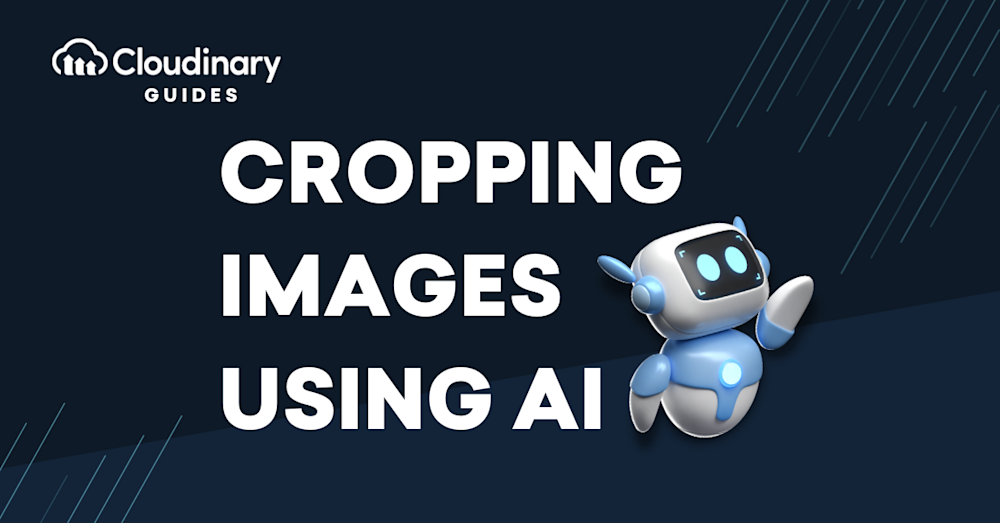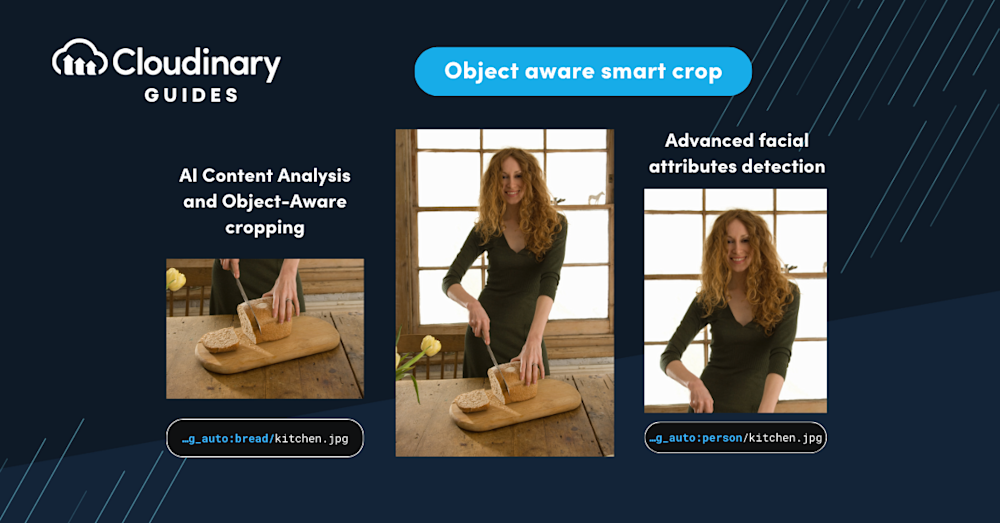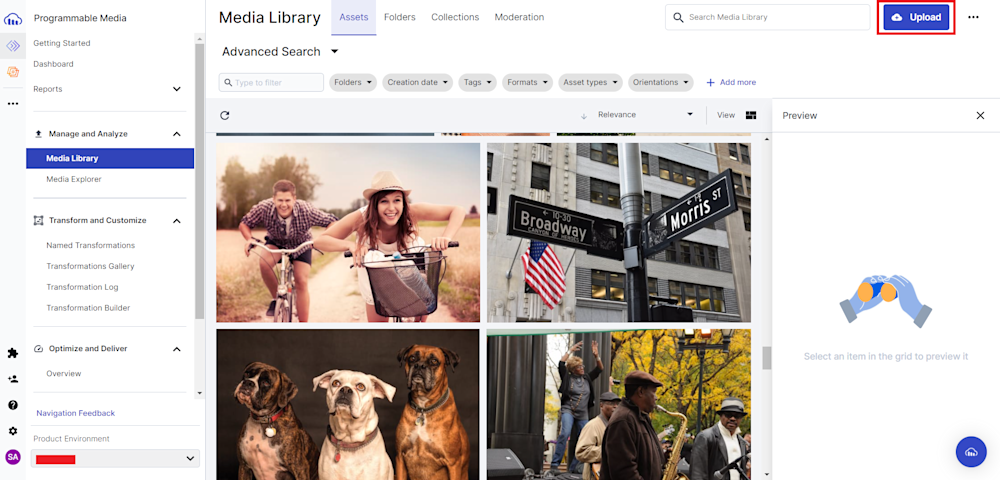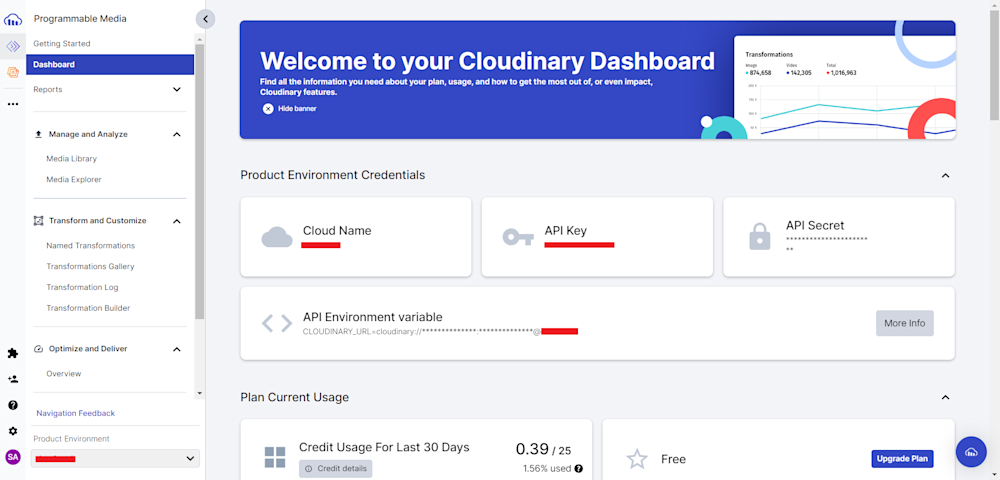Are you tired of spending countless hours manually cropping your images in a photo editor, only to wonder if you’ve missed the mark on that perfect shot? Say goodbye to the old way of doing things and step into the future of visual content creation with AI-driven image cropping. In recent years, the integration of AI into image cropping processes has ushered in a revolution in visual content optimization, and according to IBM Global AI Adoption Index 2022, 35% of companies are already utilizing AI, with 44% actively exploring its implementation in the future.
Image cropping plays a crucial role in the world of photography, graphic design, and visual content creation. It involves selecting a specific portion of an image while discarding the rest, often to improve the composition, eliminate distractions, or fit the image into a particular format or aspect ratio. The act of cropping can transform an ordinary photo into a captivating masterpiece, making it an indispensable tool for professionals and amateurs alike. With an AI Cropping Tool, this process becomes even more efficient, helping users crop images effortlessly.
In this article:
- What is AI Image Cropping?
- Key Applications of AI in Image Cropping
- Advantages of AI-Powered Image Cropping
- Innovations and Breakthroughs in AI Image Cropping
- Getting Started with AI Image Cropping and Cloudinary
What is AI Image Cropping?
AI image cropping simplifies the process by using artificial intelligence to automatically find and cut out an image’s most important and visually pleasing part. Unlike manual cropping, AI algorithms are trained to analyze the composition, subject placement, and focal points, making cropping decisions effortless. This automation not only saves time but also consistently delivers top-quality results.
How Machine Learning and Neural Networks Enhance Traditional Cropping Methods
Machine learning and neural networks play a pivotal role in enhancing traditional cropping methods in AI-driven image cropping. These technologies enable algorithms to learn from extensive datasets of images, discern patterns, and develop the capacity to make intelligent cropping choices. By training on a diverse range of images, AI systems become adept at recognizing what constitutes a visually appealing crop, taking into account factors like balance, the rule of thirds, and aesthetics- all while maintaining a specific size and removing unwanted parts effectively.
The move from manual cropping to AI-powered image cropping signifies a substantial transformation in visual content production. While manual cropping depends on human intuition and expertise, AI-driven cropping merges data-driven decision-making with computational speed. This transition enables professionals in diverse fields to streamline their workflow, minimize human error, and attain consistent, top-notch results.
Pro Tip!
Consider Cloudinary’s URL Transformations
Cloudinary allows you to easily transform your images on the fly to any required format without the need for coding skills. Simply upload your images to Cloudinary and deliver them in your desired format via URL.
Key Applications of AI in Image Cropping
Artificial Intelligence plays a pivotal role in image cropping across various domains, offering a wide range of benefits and applications, such as:
- Photography. Photographers use AI-driven cropping to fine-tune their compositions and ensure the main subject takes center stage. This technology assists in cropping images for different purposes, whether it’s for a magazine cover, a social media post, or a gallery exhibition.
- E-commerce Platforms. E-commerce platforms leverage AI crop image algorithms to crop product images automatically. This optimization ensures that products are showcased effectively, highlighting essential details and improving user engagement. Additionally, AI cropping helps maintain consistency in image presentation across a vast product catalog.
- Social Media Platforms. Social media platforms employ AI-powered cropping to automatically generate visually appealing thumbnails and previews for shared links and images. These platforms enhance user engagement and encourage click-throughs by selecting the most eye-catching portions of photos and videos.
- Digital Advertising. In the world of digital advertising, where ad formats and dimensions vary across platforms, AI crop image technology is indispensable. It enables advertisers to adapt their visuals to suit different advertising channels, ensuring maximum impact and audience engagement.
- Print Media. Imagine having the ability to effortlessly adapt your visuals to fit any magazine spread, brochure, or poster without compromising quality or impact. AI-powered image cropping is proving to be the secret weapon print media professionals have been waiting for. It simplifies the adaptation process, maintains image quality, and offers the creative flexibility to make your print materials stand out.
Advantages of AI-Powered Image Cropping
Utilizing AI for image cropping offers numerous advantages that can significantly enhance various aspects of visual content creation. AI algorithms identify the most important elements within an image, such as faces, objects, or key details, ensuring that the cropped portion highlights the intended subject and improves the overall composition. This precision and accuracy in identifying focal points of images are paramount in creating compelling visuals.
Additionally, AI brings speed and efficiency to the process of processing and cropping large volumes of images. Compared to human efforts, AI can accomplish this task in a fraction of the time, making it particularly beneficial for professionals dealing with extensive image libraries. This accelerated pace of image processing allows content creators to be more productive and responsive in their work.
Finally, AI crop image technology offers adaptability, catering to specific platforms, devices, or medium requirements. This flexibility ensures that images are optimized for different contexts, from mobile screens to print publications. By tailoring images to their intended display environments, AI helps maintain consistency and visual quality across various platforms and devices.
AI image cropping is a powerful tool, yet it poses several challenges that require careful consideration. One significant challenge revolves around addressing concerns related to the potential loss of important image details. While AI cropping excels at selecting visually pleasing compositions, there’s a risk of inadvertently cropping out details that users or creators deem crucial. Striking a harmonious balance between aesthetics and content significance presents a nuanced challenge in the implementation of AI cropping.
Another critical challenge is the need to ensure consistent quality across diverse image types and subjects. AI algorithms must perform effectively with a wide spectrum of images, ranging from portraits and landscapes to product photography and more. Maintaining consistent quality and performance across such a diverse array of image categories can prove to be a complex and demanding task for AI systems.
Bias can creep into these algorithms as well, leading to skewed cropping decisions that may not align with the desired objectives of fairness and inclusivity. To mitigate this issue, training AI models on diverse and representative datasets and implementing ongoing fairness checks to minimize bias and ensure that AI cropping remains equitable and unbiased in its decision-making processes is essential.
Innovations and Breakthroughs in AI Image Cropping
As AI image cropping tools continue to evolve, innovations in deep learning, user feedback integration, and real-time tools are driving its capabilities to new heights, promising even more exciting possibilities for the future of visual content creation and optimization.
Evolution of Deep Learning Models for Improved Cropping Insights
One of the cornerstones of AI image cropping’s evolution lies in the continuous refinement of deep learning models. These models are becoming increasingly proficient at comprehending image composition and user preferences. Through ongoing advancements in deep learning techniques, AI systems can now analyze images with a deeper understanding, resulting in more accurate and context-aware cropping. This means that when you utilize AI for cropping, it’s not merely about resizing but crafting a more visually appealing and meaningful composition.
Integration of User Feedback Loops for Continuous Cropping Optimization
To truly empower AI image cropping, AI has begun to incorporate a crucial element: user feedback loops. These loops actively involve users in cropping, enabling AI systems to learn from human preferences and adapt over time. It’s an iterative approach that ensures cropping algorithms improve with each interaction. This means users can create user-centric cropping solutions that evolve alongside their audience’s changing tastes, ultimately resulting in more engaging and relevant visual content.
Real-Time Cropping Tools for Live Content Creation and Editing
The world of content creation is increasingly dynamic, and AI is stepping up to the challenge with real-time cropping tools. These tools put the power of instant adjustments directly in the hands of content creators during live broadcasts or content creation sessions. This added dimension transforms the use of AI in visual content production, allowing for on-the-fly enhancements.
Getting Started with AI Image Cropping and Cloudinary
AI-powered image cropping is a powerful technique that can revolutionize your image processing workflow. Cloudinary, a leading cloud-based image and video management platform, offers comprehensive tools and APIs for AI image cropping. Let’s take a closer look at how you can get started with AI image cropping using Cloudinary’s platform and provide some example code snippets to help you kickstart your journey.
Before you can get started with AI image cropping, you’ll need to sign up for a Cloudinary account. Visit Cloudinary’s website and create a new account or log in if you already have one.
Step 1: Upload an Image
Once you’re logged in, you can start by uploading an image to Cloudinary. You can do this using the Cloudinary console or by using Cloudinary’s APIs to upload images programmatically.
Step 2: Use Cloudinary’s AI Cropping Capabilities
Cloudinary offers AI-powered cropping features that are easy to implement. You can specify the desired crop dimensions and let Cloudinary’s AI do the rest.
Here’s an example of how you can crop an image using Cloudinary’s URL-based API:
<img src="https://res.cloudinary.com/your-cloud-name/image/upload/c_crop,w_400,h_300/sample.jpg" alt="Cropped Image">
Here, c_crop indicates that you want to perform a crop operation, while w_400 specifies the desired width of the cropped image (400 pixels), and h_300 specifies the desired height of the cropped image (300 pixels).
You can customize these parameters based on your specific cropping needs.
Step 3: Explore Advanced Cropping Techniques
Cloudinary offers advanced cropping techniques, including face detection, custom coordinates, and automatic subject detection. These features allow you to fine-tune cropping to align with specific use cases.
Here’s an example of using automatic subject detection for smart cropping:
<img src="https://res.cloudinary.com/your-cloud-name/image/upload/c_crop,g_auto/sample.jpg" alt="Smart Cropped Image">
In this example, c_crop is used to specify cropping, and g_auto instructs Cloudinary to automatically detect and crop around the main subject in the image.
Step 4: Integrate Cloudinary with Your Application
To integrate Cloudinary and utilize AI image cropping, you can upload an image and apply cropping transformations simultaneously. Let’s start by configuring Cloudinary with your Python environment. Head over to the Cloudinary Dashboard and start by copying your Product Enviroment Credentials.
For this example, we will be using winter_fashion.jpg located in the Assets folder of our project:
Next, install the Cloudinary Python SDK using pip:
pip install cloudinary
Now, open your Python project and define the Cloudinary API with your account credentials:
import cloudinary
from cloudinary.uploader import upload
# Configure Cloudinary with your account credentials
cloudinary.config(
cloud_name="your_cloud_name",
api_key="your_api_key",
api_secret="your_api_secret"
)
Replace your_cloud_name, your_api_key, and your_api_secret with your actual Cloudinary credentials.
Using Auto Gravity For Smart Cropping Images
Now that your project is set up, you can use the Cloudinary upload function to upload an image and apply smart cropping with automatic gravity:
# Define the path to the image file you want to upload
image_path = "Assets/winter_fashion.png"
# Upload the image and perform smart cropping
result = upload(
image_path,
gravity="auto", # Use "auto" for automatic smart cropping
crop="fill", # Use "fill" for smart cropping
width=400, # Set the desired width of the cropped image
height=300, # Set the desired height of the cropped image
format="jpg" # Set the desired output format
)
# Get the URL of the uploaded and cropped image
cropped_image_url = result['secure_url']
print("Auto Cropped Image URL:", cropped_image_url)
Here, we are defining the file path to the image we want to upload. Subsequently, we initiate the image upload process and employ smart cropping by setting gravity to auto and crop to fill; we enable automatic smart cropping. The width and height parameters allow us to determine the desired dimensions of the cropped image, which are set to 400 pixels in and 300 pixels, respectively. Finally, we specify the output format as jpg. After executing these operations, we retrieve the URL of the uploaded and cropped image, which is stored in the cropped_image_url variable. Here is what our image looks like:
Using Imagga Crop
You can also use the Imagga Crop addon, which uses artificial intelligence and machine learning algorithms to automatically crop your images. With Immaga, you don’t need to specify dimensions as AI determines the optimal object crop for you (learn more about this add-on here):
# Define the path to the image file you want to upload
image_path = "Assets/winter_fashion.png"
# Upload the image and perform smart cropping using Imagga
result = upload(
image_path,
crop="imagga_crop",
format="jpg" # Set the desired output format
)
# Get the URL of the uploaded and cropped image
imagga_cropped_url = result['secure_url']
print("Imagga Cropped URL:", imagga_cropped_url)
In both methods, we use the upload function to upload the image, apply smart cropping, and set desired output parameters. You can choose the method that best suits your needs for AI image cropping with Cloudinary.
That’s it! You’re now equipped to start using AI image cropping with Cloudinary to enhance your image processing workflow and deliver visually stunning images on your website or application.
Wrapping Up
AI-powered image cropping is a transformative technique that optimizes visual content efficiently. By using AI cropping, you can enhance image composition, adapt visuals for various platforms, and provide users with engaging tailored content. Implementation is made easier with user-friendly tools and APIs, making it a valuable addition to any image-processing workflow. Harness the power of AI cropping to captivate your audience and elevate your visual content.
Integrating Cloudinary into your applications and websites allows you to streamline your image processing workflow and deliver visually appealing, optimized images to your audience. So, get started with Cloudinary to use AI image cropping and take your visual content to the next level!
Learn more:
Automatically Crop Videos Without Losing Focus
Smart Cropping, Intelligent Quality Selection, and Automated Responsive Images
New AI-Based Image Auto-Crop Algorithm Sticks to the Subject






